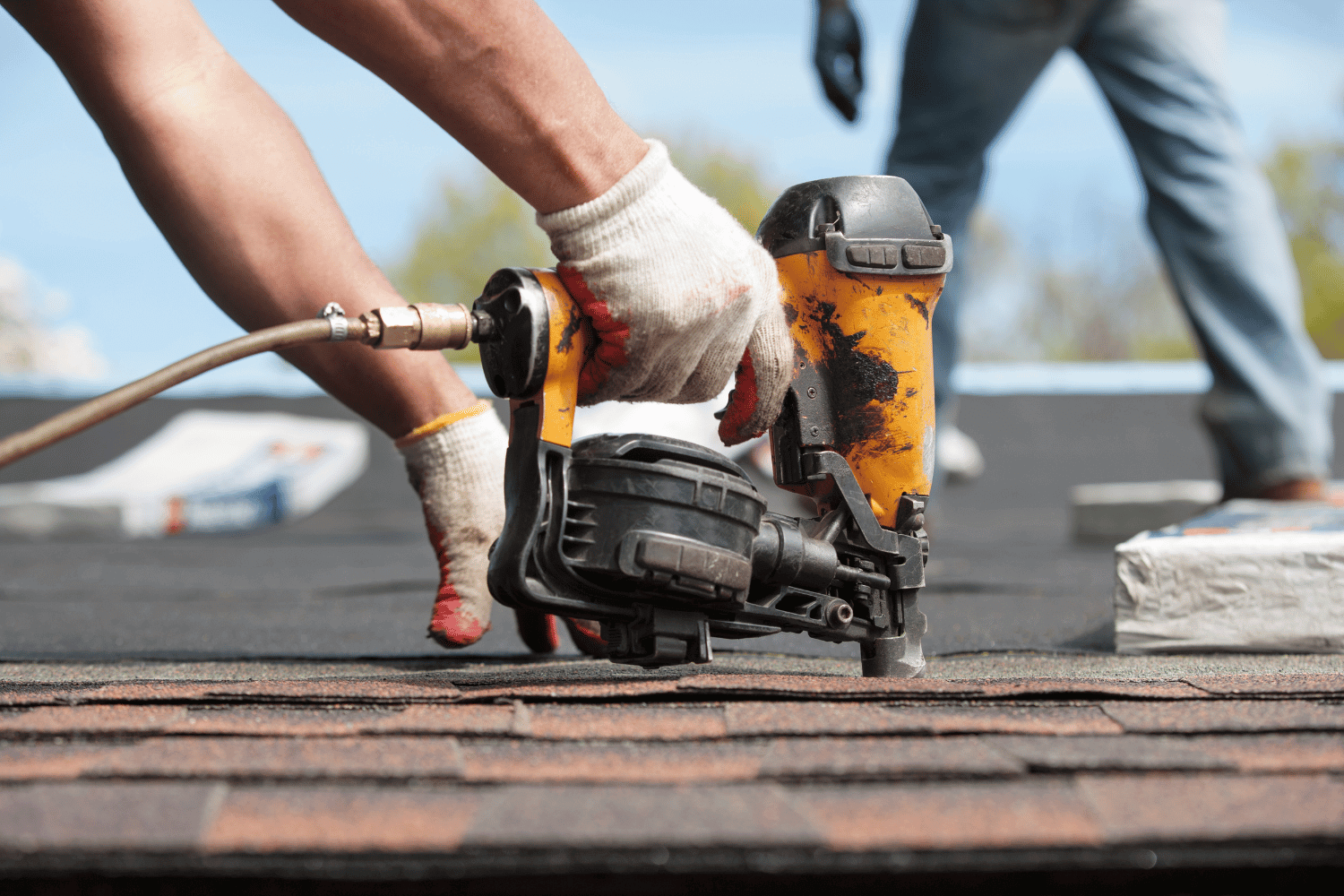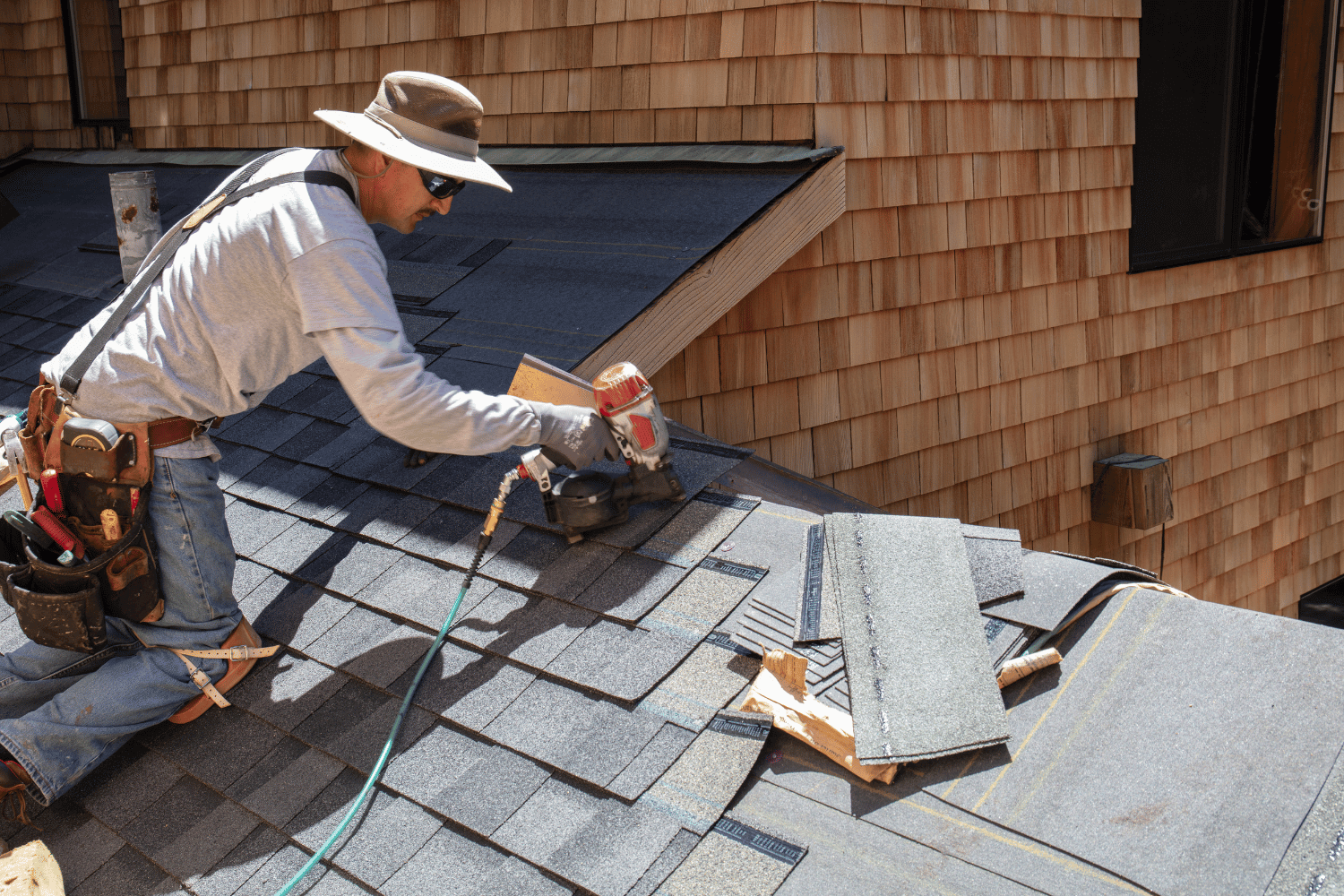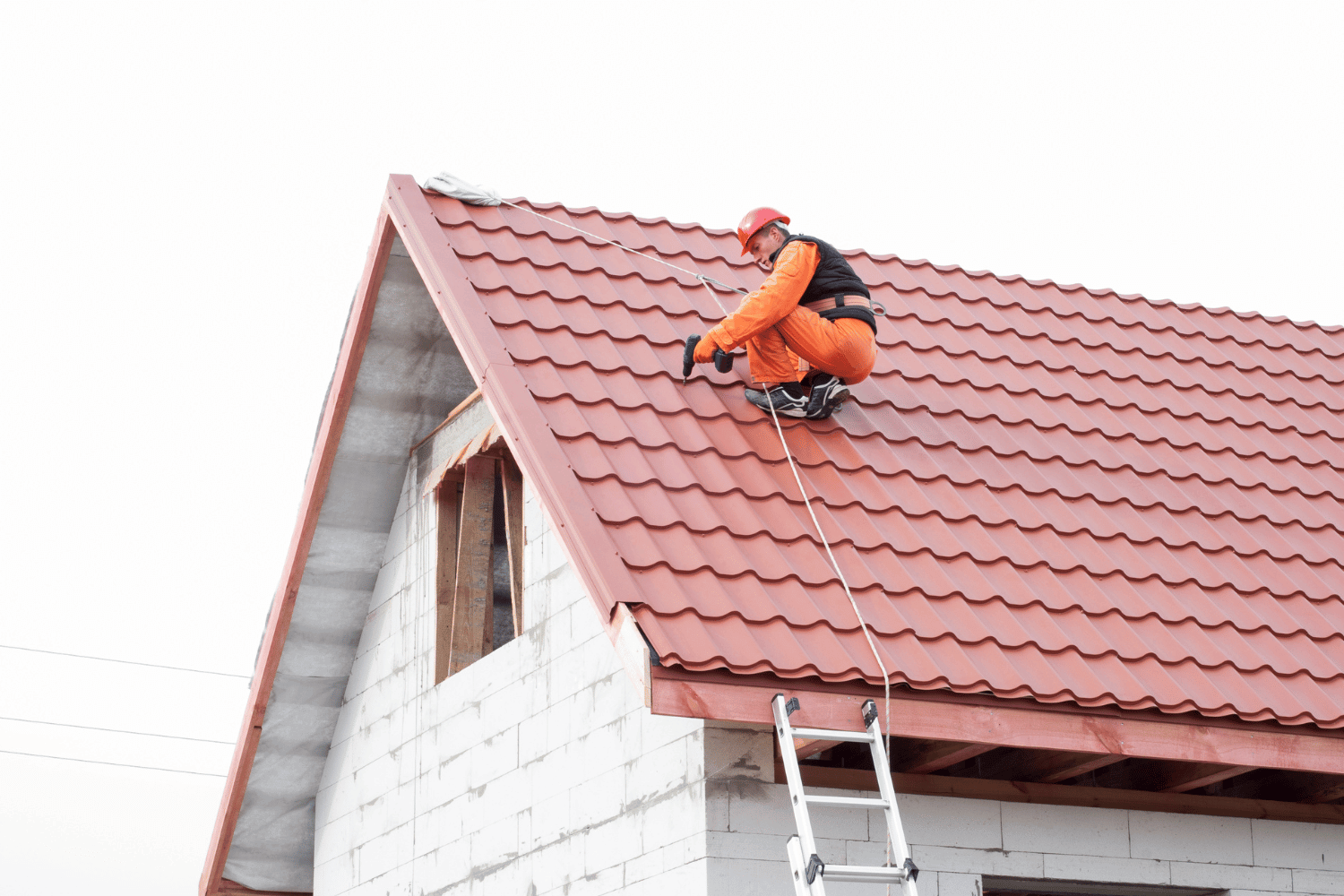Ready to INSTALL NEW ROOF? This guide covers when to replace your roof, costs, the choice between DIY and professional installation, and the step-by-step process. Start here to make your roofing project a success.
Key Takeaways
-
Identify signs your roof needs replacing, such as age, visible damage, leaks, and moisture issues.
-
Budget for a new roof, considering material and labor costs, which can range from $5,400 to $19,800.
-
Choose between DIY installation or hiring professionals, keeping in mind the risks and benefits of each option.
Signs You Need a New Roof

An illustration showing signs that indicate the need to install a new roof.
Identifying the need for a new roof is crucial to keeping your home protected. Key indicators include the age of your current roof, visible damage, leaks, moisture issues, and the growth of moss or algae.
Age of the Roof
Asphalt shingles, the most common roofing material, typically last between 20 to 30 years. If your asphalt shingle roof is approaching or has passed this age range, it may be time for a replacement.
Different materials have varying lifespans, with some like metal and slate lasting much longer. Regular inspections as your roof ages can help catch minor issues before they escalate.
Visible Damage
Cracked, curled, or missing old shingles are clear indicators that your roof may need replacing. These issues can severely impair your roof’s ability to protect your home from the elements.
Broken or warped shingles and cracked roof tiles are also clear indicators that it’s time for a new roof.
Leaks and Moisture
Water stains on ceilings or walls and moisture damage in the attic are significant warning signs that your roof is compromised and may need replacing.
Clogged gutters can exacerbate these problems by causing water to back up and seep under shingles, leading to leaks.
Moss and Algae Growth
Moss and algae growth can indicate underlying moisture issues. Moss, mold, and fungi can weaken shingles, leading to further damage and potential leaks if not addressed promptly.
Cost of Installing a New Roof

An illustration depicting the cost factors involved in installing a new roof.
Budgeting for a new roof involves understanding the costs, which can range from $5,400 to $19,800. Factors influencing the cost include the type of shingles, roof size, and installation complexity.
Material Costs
Material costs can make up about 40% of the total expense, with prices per roofing square (100 square feet) ranging from $150 to $1,500, depending on the type of materials used.
Replacing a shingle roof requires roofing materials such as caulk, drip edge, flashing, roofing adhesive, nails, underlayment, and shingles.
Labor Expenses
Labor costs, making up about 60% of the total, can vary based on the complexity of the roof design and accessibility. Intricate designs and hard-to-reach roofs demand more time and effort, thus increasing costs.
Additional Factors
Additional costs may arise from removing the existing roof, obtaining local building permits, and disposing of old materials. The condition and complexity of the roof can also impact expenses, with more damaged or intricate roofs requiring extra resources.
DIY vs. Hiring a Professional Roofing Contractor

An illustration contrasting DIY roof installation with hiring a professional roofing contractor.
Choosing between DIY roof installation and hiring a professional involves considering cost, time, safety, and expertise. While DIY may seem cost-effective, it carries significant risks and challenges.
DIY Roof Installation
DIY roof installation can be tempting due to potential savings, but it’s a massive, dangerous, and time-consuming task. Material costs range from $2,500 to $6,300, excluding safety gear and equipment expenses.
Improper installation can lead to significant issues like leaks and structural damage, ultimately reducing the roof’s lifespan.
Benefits of Hiring Professionals
Hiring professional roofing contractors brings advantages such as expertise, efficiency, and safety. They can complete the job quickly and correctly, reducing the risk of future problems.
Licensed and insured contractors also protect homeowners from liability for accidents during the roof replacement process.
Step-by-Step Guide to Installing a New Roof

An illustration of the step-by-step process of installing a new roof.
Installing a new roof involves several critical steps to ensure its integrity and longevity.
Here’s a detailed guide to the roof installation process.
Preparing the Site
Proper preparation ensures successful roof installation. Coordinate material delivery and arrange for a dumpster to handle waste. Protect plants around your home and inform neighbors about the project to prepare them for noise disruptions.
Removing the Old Roof
The old roof must be entirely removed to ensure proper installation of new materials. Roofing professionals use specialized tools like shovels and pry bars to remove existing roof materials efficiently.
Proper disposal of the old roofing material is essential to maintain a clean and safe work environment.
Inspecting and Repairing the Roof Deck
Inspecting the roof deck after removing old materials ensures it is structurally sound. Contractors check for moist areas or trouble spots needing repair.
Addressing these issues before installing new materials prevents future problems.
Installing Underlayment and Drip Edge
The underlayment acts as a waterproof barrier protecting the roof deck and is installed before the shingles. The metal drip edge directs water into the gutters, preventing moisture damage to the roof edges.
The combination of underlayment and drip edge enhances the roof’s moisture resistance and durability.
Laying Down New Shingles
Laying down new shingles begins at the eaves and metal drip edge, working upwards toward the roof peak. Starter shingles ensure proper sealing at the edges.
A chalk line helps maintain straight lines and proper alignment during installation.
Adding Flashing and Vents
Adding flashing and vents is crucial for preventing leaks and ensuring the roof’s integrity. Flashing should be installed around all joints and roof penetrations like chimneys, valleys, and vents. Properly installed and sealed flashing offers effective leak protection.
Finalizing with Ridge Cap
Applying ridge caps, which provide a waterproof seal at the roof’s peak, is the final step. Ridge caps overlap shingles or caps, are nailed securely, and cover previous nails to create a continuous, weather-resistant barrier.
Cleanup and Inspection
Thorough cleanup and inspection are vital after installing the new roof. Cleaning the work area prevents hazards and ensures the job is completed neatly.
A detailed inspection verifies that all components are correctly installed and identifies any potential issues early.
Post-Installation Care and Maintenance

An illustration showing post-installation care and maintenance for a new roof.
Ongoing care and maintenance are essential to prolong the lifespan of your new roof.
Key practices include regular inspections, gutter cleaning, and trimming overhanging branches.
Regular Inspections
Annual inspections by a professional roofing contractor are crucial for maintaining your roof’s health. These inspections typically involve repairing cracked shingles and removing mold, with costs ranging from $125 to $342.
Gutter Cleaning
Cleaning gutters at least twice a year prevents debris buildup and water damage. Proper gutter maintenance ensures water is effectively directed away from your roof and home, preventing leaks and structural damage.
Trimming Overhanging Branches
Regularly trimming overhanging tree branches helps prevent damage from fallen limbs and scraping against shingles, reducing the risk of unexpected roof repairs.
Summary
In summary, recognizing the signs that you need a new roof, understanding the costs involved, and carefully considering whether to DIY or hire a professional are crucial steps in the roof installation process. Following a detailed step-by-step guide ensures that your new roof is installed correctly and efficiently.
Proper post-installation care and maintenance, including regular inspections, gutter cleaning, and trimming overhanging branches, are essential for maintaining your roof’s integrity and prolonging its lifespan. Investing in your roof’s health today can save you significant time and money in the future.
Frequently Asked Questions
How long does a typical roof replacement take?
A typical roof replacement usually takes about a week to two weeks, averaging around 12 days. It’s a good idea to plan for some disruption during this time!
What are the signs that I need a new roof?
If your roof is aging, shows visible damage, leaks, or has moss and algae growth, it’s definitely time to consider a new roof. Don’t wait until the problems get worse!
What are the costs involved in roof installation?
Installing a roof can cost anywhere from $5,400 to $19,800, depending on materials and labor, plus extras like permits and disposal fees. It’s essential to budget for these factors to avoid surprises!
Is DIY roof installation a good idea?
DIY roof installation can save you money, but it carries safety risks and the chance of making costly mistakes. It’s often best to hire a professional to ensure the job is done right.
How often should I have my roof inspected?
It’s best to have your roof inspected once a year by a professional to keep it in good shape and extend its life. Regular check-ups can help catch any potential issues early!

